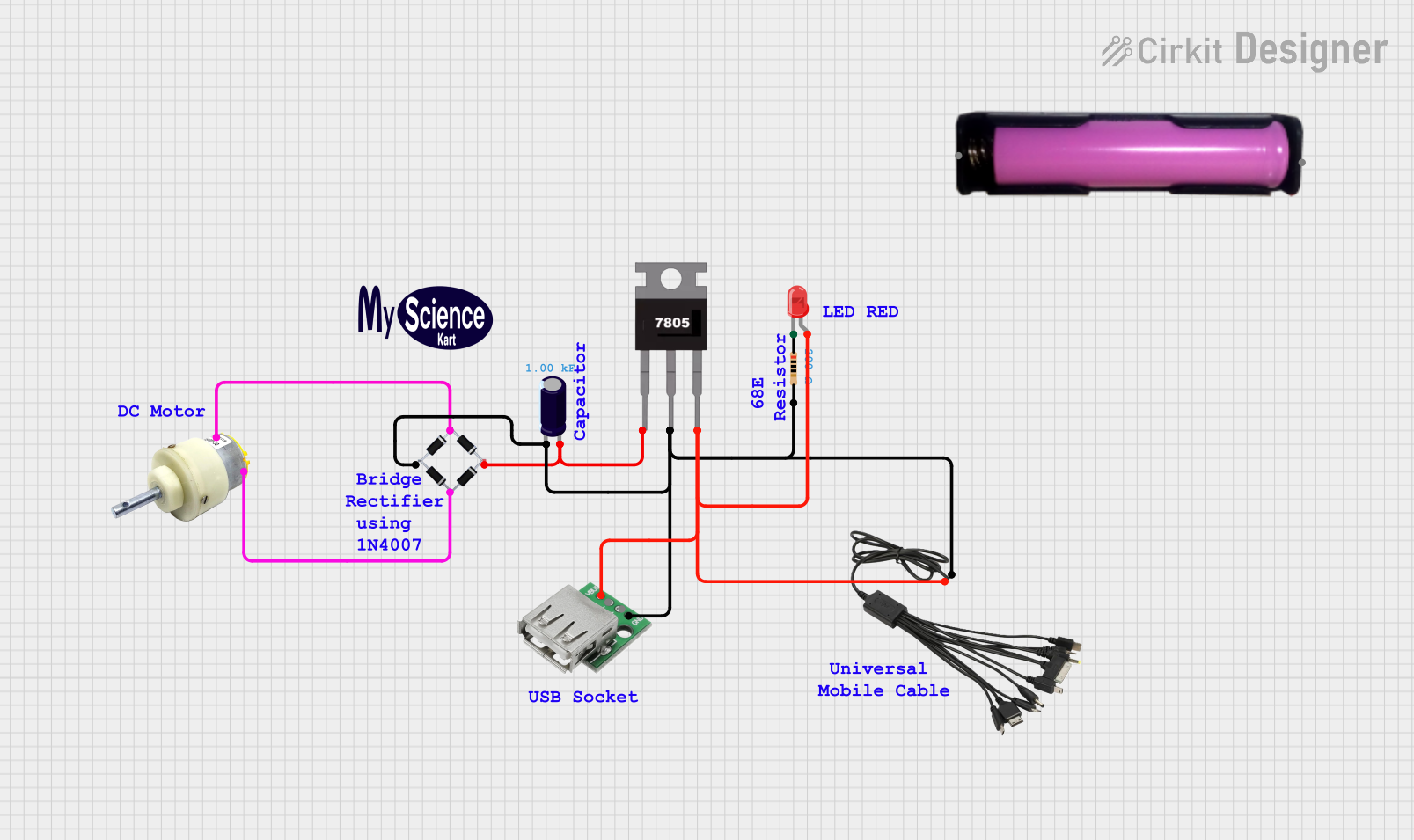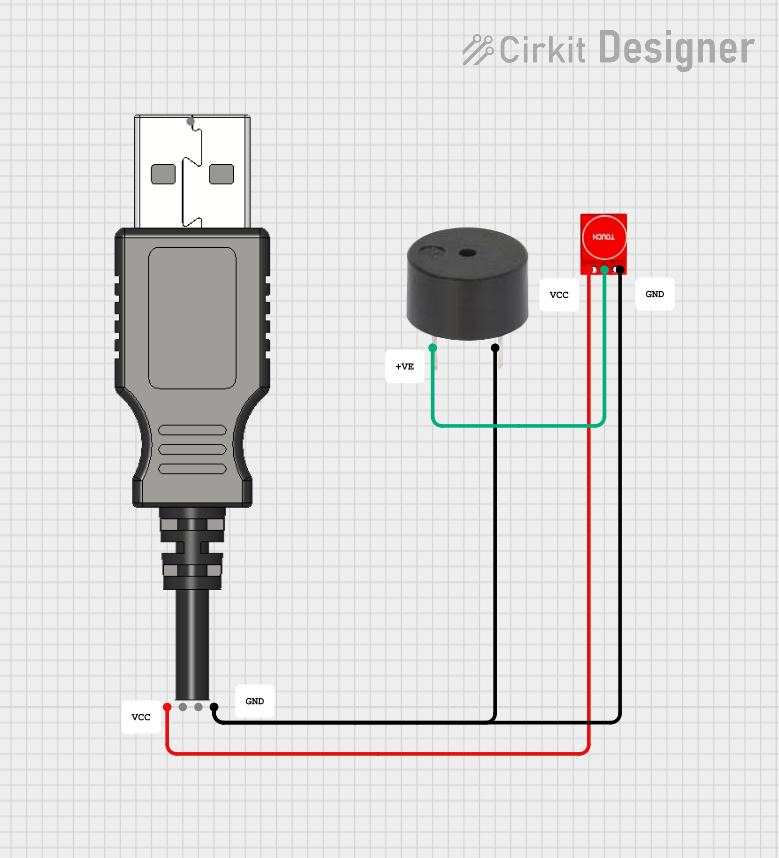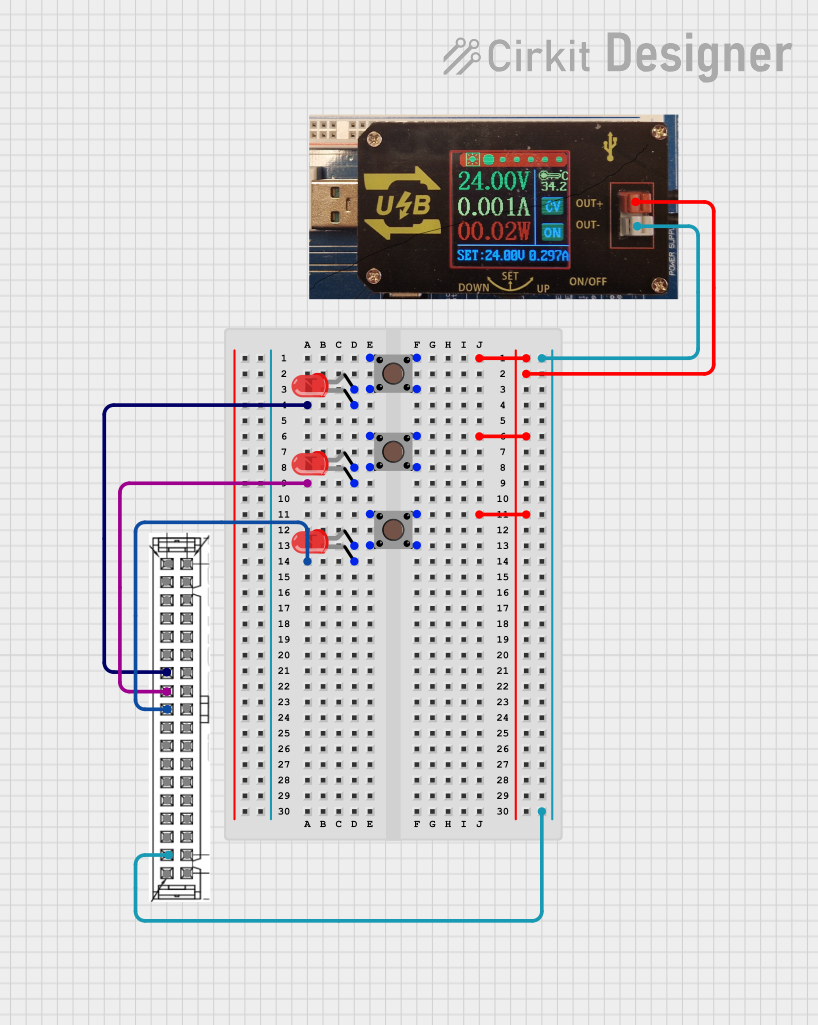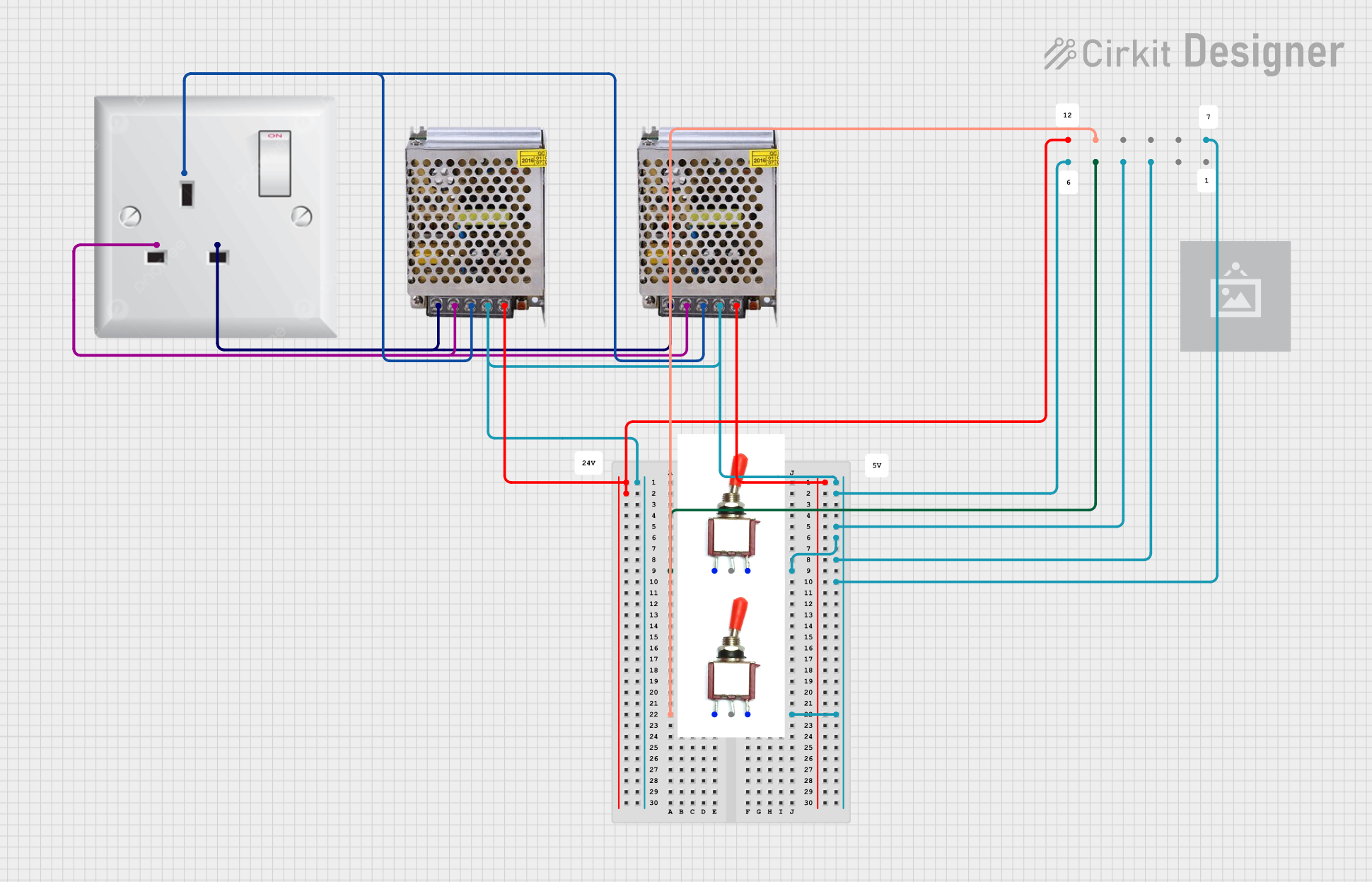
How to Use USB Plug: Examples, Pinouts, and Specs

 Design with USB Plug in Cirkit Designer
Design with USB Plug in Cirkit DesignerIntroduction
A USB plug is a standardized connector used to connect devices to a power source or to transfer data between devices. It is widely used in consumer electronics, computers, and mobile devices. USB plugs come in various types, including USB-A, USB-B, and USB-C, each designed for specific applications and compatibility. The USB standard ensures reliable power delivery and data transfer, making it a cornerstone of modern connectivity.
Explore Projects Built with USB Plug

 Open Project in Cirkit Designer
Open Project in Cirkit Designer
 Open Project in Cirkit Designer
Open Project in Cirkit Designer
 Open Project in Cirkit Designer
Open Project in Cirkit Designer
 Open Project in Cirkit Designer
Open Project in Cirkit DesignerExplore Projects Built with USB Plug

 Open Project in Cirkit Designer
Open Project in Cirkit Designer
 Open Project in Cirkit Designer
Open Project in Cirkit Designer
 Open Project in Cirkit Designer
Open Project in Cirkit Designer
 Open Project in Cirkit Designer
Open Project in Cirkit DesignerCommon Applications and Use Cases
- Charging mobile devices, tablets, and other electronics
- Data transfer between computers and peripherals (e.g., printers, external drives)
- Connecting input devices like keyboards and mice
- Powering small electronic projects and development boards (e.g., Arduino)
- Audio and video transmission in some USB-C implementations
Technical Specifications
General Specifications
| Parameter | Value/Description |
|---|---|
| Voltage (V) | 5V (standard), up to 20V for USB Power Delivery |
| Current (A) | 0.5A (USB 2.0), 0.9A (USB 3.0), up to 5A (USB-C) |
| Data Transfer Rate | Up to 480 Mbps (USB 2.0), 5 Gbps (USB 3.0), 10+ Gbps (USB-C) |
| Connector Types | USB-A, USB-B, USB-C, Micro-USB, Mini-USB |
| Durability | 1,500 to 10,000 insertion/removal cycles |
Pin Configuration and Descriptions
USB-A Plug
| Pin Number | Name | Description |
|---|---|---|
| 1 | VBUS | +5V power supply |
| 2 | D- | Data transfer (negative) |
| 3 | D+ | Data transfer (positive) |
| 4 | GND | Ground |
USB-C Plug
| Pin Number | Name | Description |
|---|---|---|
| A1, B1 | GND | Ground |
| A4, B4 | VBUS | +5V to +20V power supply |
| A6, B6 | D+ | Data transfer (positive) |
| A7, B7 | D- | Data transfer (negative) |
| A5, B5 | CC | Configuration channel for power and data roles |
| A8, B8 | SBU1, SBU2 | Sideband use (e.g., audio, alternate modes) |
Usage Instructions
How to Use the USB Plug in a Circuit
- Identify the USB Type: Determine the type of USB plug (e.g., USB-A, USB-C) required for your application.
- Connect Power and Ground: Use the VBUS and GND pins to supply power to your circuit. Ensure the voltage and current ratings match your device's requirements.
- Data Connections: For data transfer, connect the D+ and D- pins to the corresponding pins on the device or microcontroller.
- USB-C Specifics: If using USB-C, ensure proper configuration of the CC pins to negotiate power delivery and data roles.
Important Considerations and Best Practices
- Voltage and Current Ratings: Always verify the voltage and current requirements of your device to avoid damage.
- Cable Quality: Use high-quality USB cables to ensure reliable power delivery and data transfer.
- USB-C Power Delivery: For USB-C, use a compatible power delivery controller to negotiate higher voltages (up to 20V) if needed.
- Avoid Overloading: Do not exceed the current rating of the USB plug to prevent overheating or failure.
Example: Connecting a USB Plug to an Arduino UNO
The Arduino UNO can be powered via a USB-A plug. Below is an example of how to use a USB plug for power and data transfer.
// Example: Reading data from a USB-connected device on Arduino UNO
// Ensure the USB plug is connected to the Arduino's USB port for power and data.
void setup() {
Serial.begin(9600); // Initialize serial communication at 9600 baud
Serial.println("USB Plug Connected. Ready to receive data.");
}
void loop() {
if (Serial.available() > 0) {
// Read incoming data from the USB connection
char receivedData = Serial.read();
Serial.print("Received: ");
Serial.println(receivedData);
}
}
Troubleshooting and FAQs
Common Issues and Solutions
No Power Delivery
- Cause: Incorrect wiring or damaged cable.
- Solution: Verify the VBUS and GND connections. Test with a different cable.
Data Transfer Fails
- Cause: Misaligned D+ and D- connections or incompatible devices.
- Solution: Check the pin connections and ensure both devices support the same USB standard.
Overheating
- Cause: Excessive current draw or poor-quality cable.
- Solution: Use a cable rated for the required current. Reduce the load on the USB plug.
USB-C Device Not Recognized
- Cause: Missing or incorrect CC pin configuration.
- Solution: Use a USB-C controller IC to handle power and data role negotiation.
FAQs
Q: Can I use a USB plug to power a 12V device?
A: Standard USB plugs provide 5V. Use USB-C with Power Delivery for higher voltages, up to 20V.Q: How do I identify the type of USB plug I need?
A: Check the device's specifications or port shape. USB-A is rectangular, USB-C is oval, and USB-B is square.Q: Can I use a USB plug for both power and data simultaneously?
A: Yes, USB plugs are designed to handle both power delivery and data transfer concurrently.Q: What is the maximum current a USB plug can handle?
A: USB-C can handle up to 5A with Power Delivery, while USB-A typically supports up to 0.9A (USB 3.0).